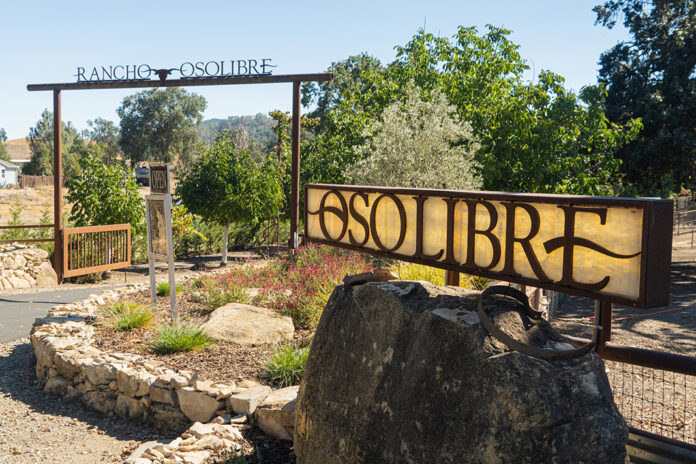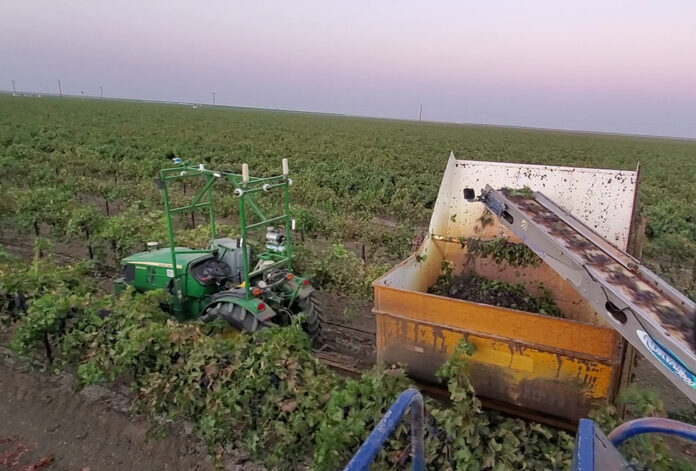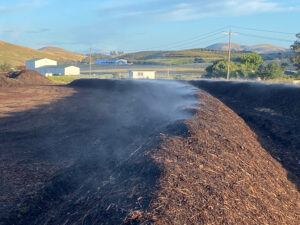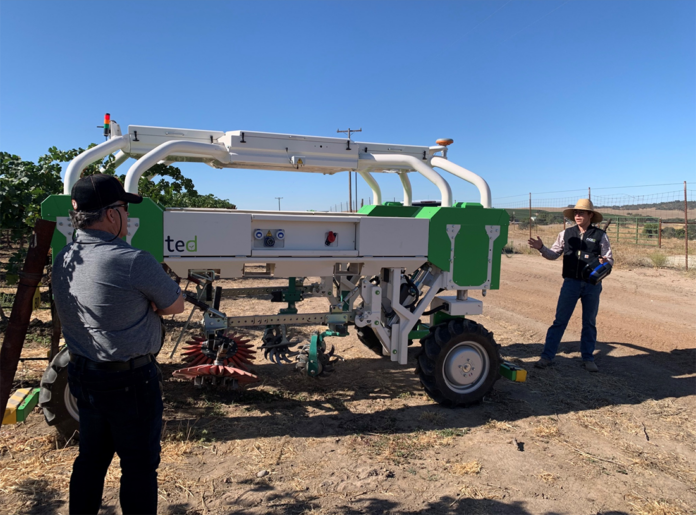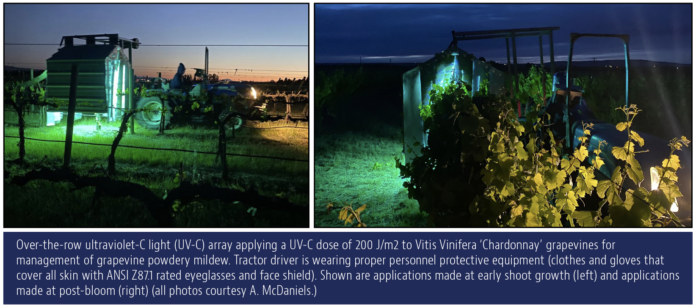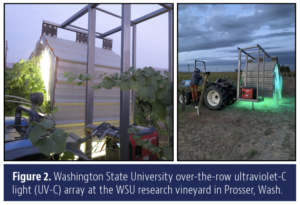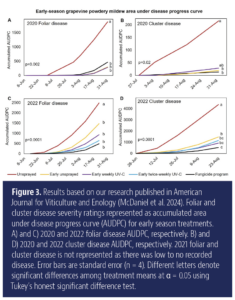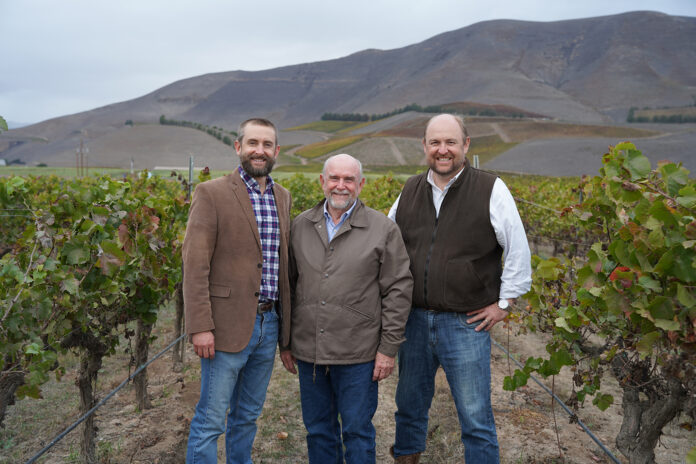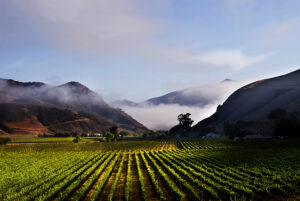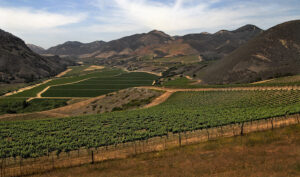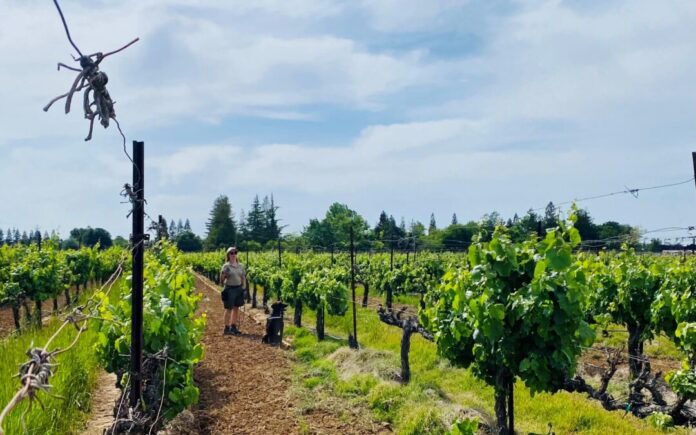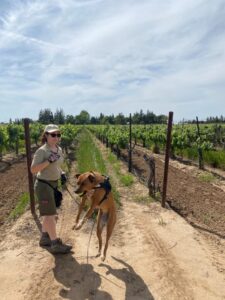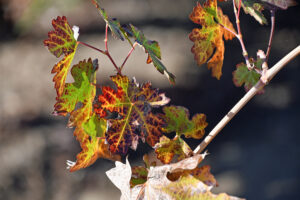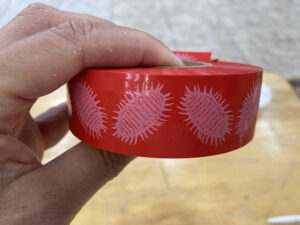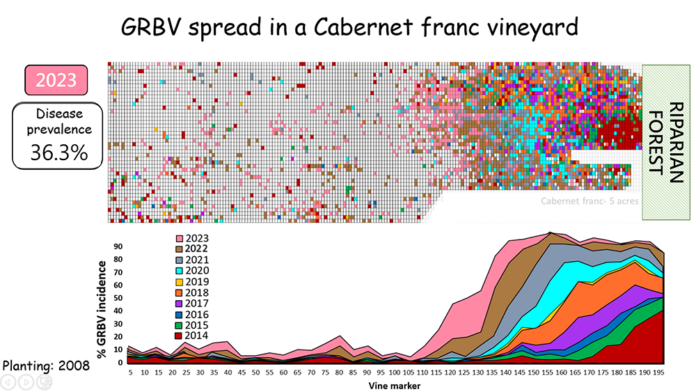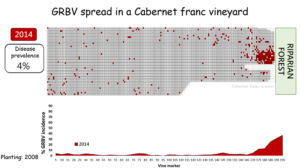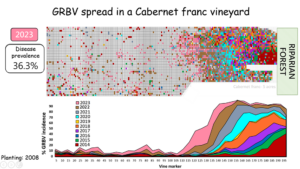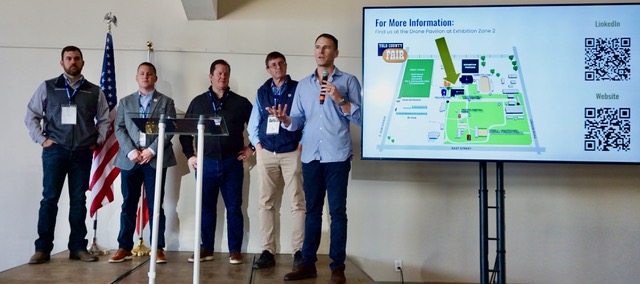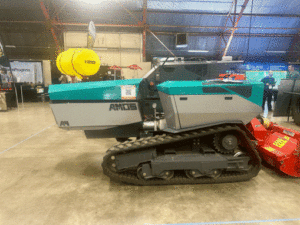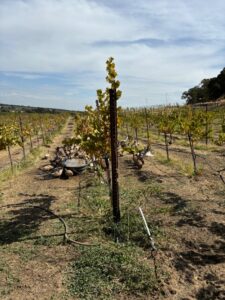Today, Paso Robles residents Chris and Linda Behr may be best known for their successful cattle ranch, winery and SIP Certified® sustainable vineyard: Rancho Oso Libre.
Anyone who has visited the ranch and talked with the Behrs probably knows about their dedication to helping those in need through their Oso Libre Por Vida Foundation. But they may not know the origins of the Foundation predate the establishment of the winery by nearly two decades.
Before the Behrs moved to Paso Robles and started the ranch, they lived in Los Angeles. At this time, Chris ran his construction company, Behr Construction.
Chris was contracted by the Children’s Institute to build special one-way interview rooms to give children a safe space to share their stories. The rooms would allow a social worker to work with a child privately while another agent could observe the interaction without being intrusive or putting stress on the child.
For Chris, this experience turned into more than a construction project. The job invited him to learn about the Institute’s mission. He saw children heal through dedicated time and support, and it moved him deeply.
This experience inspired Chris to reach out to the Big Brothers Big Sisters of America program. He felt called to become a mentor. During his time with the program, he took on challenging cases and even coached others to become a “Big” mentor.
Helping children was just the beginning of his and Linda’s devotion to charitable practices. Their attention next turned to people involved with the armed forces, and then to animals in need. When Linda’s parents were diagnosed with and eventually passed from cancer, they dedicated funds to support cancer research.
The impact of Chris’s work with children in need and Linda’s parents’ illnesses were instrumental to what several years later became the Oso Libre Por Vida Foundation.
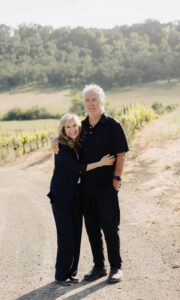
La Vida En el Rancho
In 1996, the Behr’s hearts called them north. They bought a 90-acre ranch on the west side of Paso Robles to pursue farming.
The birth of Rancho Oso Libre was a group effort. Chris drew up plans for the home and winery. His Behr Construction crew brought the plans to life. Over the next four years, the Behrs planted their grapes and acquired cattle. In 2000, their good friend Michael Barreto taught them how to make wine.
In 2008, Chris and Linda’s son, Jeff, and his wife, Liz, joined their parents to put the finishing touches on the winery. But Jeff and Liz’s visit yielded more than a winery ready for business.
The group discussed how the Behrs would tie their charitable services to the winery. Chris and Linda wanted their passion projects to be intertwined, but they weren’t sure what that would look like.
That’s when Linda came up with the name “Oso Libre Por Vida” Foundation. Together with the name of the ranch, the translation is “Free Bear for Life.” The name ties the two together in a meaningful play on the Behr’s name and their charitable philosophy.
Although still unsure of what the union would look like in practice, Chris and Linda knew with a great name and a winery to engage the community, they were off to a good start.
Votive Candle Offering
One of the first features that entwined Rancho Oso Libre and the Por Vida Foundation was built into the winery itself, or, rather, omitted from it. Chris left a hole in the wall near the winery’s entrance.
Despite uncertainty over how the feature would be accepted, the Behrs left this opening for a Votive candle offering: A space for their guests to take a moment to think about someone they love and light a candle in their honor.
To their surprise, it was a hit. The Behrs found that as well as lighting candles, guests were leaving offerings at the Votive. “We really didn’t think it would be used,” Chris said. “Early on, a woman came up to me to tell me the tray was full and handed me her offering. That’s when we knew this was something people truly appreciated.”
All Votive offerings are donated to support people and animals in need under the Por Vida Foundation. At the end of each weekend, Oso Libre’s team collects the offerings from the tray and puts out fresh candles for the following week’s guests.
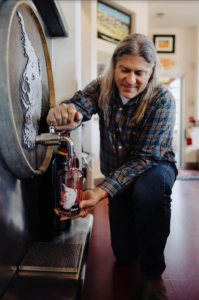
Vines, Wines and Angus
With the space to host, wine to bring people together and beef to feed them, the Behrs came up with another way to tie the ranch’s activities to the Por Vida Foundation: Saturday Angus Days.
While tickets to the event welcome guests to enjoy an Estate Angus Burger, sides, wine and live music, they also give back to the community.
Each of Oso Libre’s Angus Day events is held to support a specific cause. Prior to each event, the team sits down to decide what that cause will be. If there is an issue or tragedy affecting the community, that’s where their Angus Day proceeds go.
Chris said Angus Days have “really gotten a life of their own. People connect drinking their wine with the money that will go to charitable causes; some even give money without drinking wine.”
The Behrs host around 20 Angus Day events each year, inviting the community to come together to enjoy great wine and angus and support those in need. “If people don’t like their burger, they like it more knowing it goes to charity. They say, ‘That burger was delicious.’”
Poker-Style Tasting Chips
Oso Libre’s Poker Style Tasting Chips are tasting certificates with a twist. Similar to standard certificates, guests can exchange a chip for a complimentary tasting for two. What makes them unique is for each chip that is redeemed, Oso Libre gives $5 to charity.
Chips are easy to come by. They are given to new members who can pass them along to friends, and Oso Libre staff hands them out to guests at their own discretion.
The over-1000 chips Oso Libre distributes each year represent thousands of dollars the community helps give in charitable contributions.
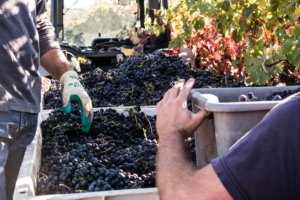
Solera
The beacon of the winery is the Solera wine program. “It’s a continuous layered wine that has over 10 years of vintages and varietals,” Chris said. “Every wine we make is in it.”
Solera is treated like a growler at a brewery. Oso Libre even uses growler bottles for this special club-exclusive blend. Two barrels of Solera are kept safe right in the tasting room so members can bring their growler in and watch it be refilled. All proceeds from Solera sales and refills go to the Por Vida Foundation.
The Solera tradition began in 2004, back when Jeff and Liz were Oso Libre’s winemakers. Since then, Solera has never been emptied.
“We keep the bung proper, keep nitrogen clear, monitor S.O., we keep it safe and freshen it up. It’s got to taste great, people love it,” Chris said.
When Jeff and Liz returned to Los Angeles in 2019, the Behrs brought in winemakers Michael and Joey Barreto, who are now also business partners. The team who taught the team how to make wine in 2000 continue the Solera tradition today.

Passion in Every Pour
Every quarter, the Oso Libre team counts all the Por Vida funds and sits down to decide how they will be distributed.
Keeping with the roots of their charitable activities, Chris and Linda donate most of the funds to the same four main causes: cancer research, prevention of child abuse, support for armed forces and veterans, and humane care of animals.
“We often plan weeks or even months in advance,” Chris said. But tragedy can strike at any time. If the team hears about an issue affecting the community, plans change and they direct funds toward reliving the local issue.
“We’ll switch gears if a big deal comes up and dedicate an event to it.”
Chris and Linda Behr take great pride in Oso Libre’s Por Vida Foundation and love telling their guests how their visit supports the community. “People connect enjoying wine with giving back,” Chris said. “It makes them feel pretty darn good!”
Sustainability doesn’t stop at the farm level. Like Oso Libre’s Por Vida Foundation demonstrates, it includes socially responsible practices that support the community and those in need. A winery in San Luis Obispo, Calif. found a creative way to get their staff involved in finding new ways to practice sustainability. Read the next Sustainable Story to learn how.












